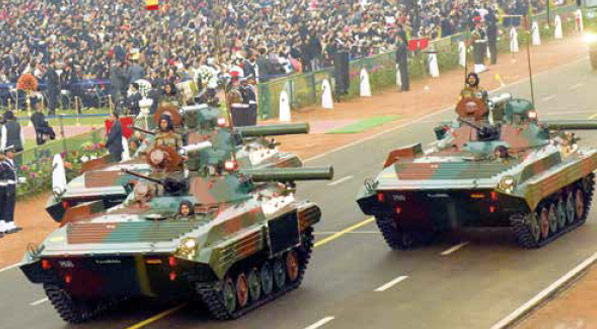
New Delhi: Modernisation of the Army is a systematic process undertaken through a fifteen years Long Term Integrated Perspective Plan, Army’s Five Years Capital Acquisition Plan and the Annual Acquisition Plan (two year roll on plan), Lok Sabha was told on November 20.
In a written reply, Minister of State for Defence Shripad Naik said the modernisation process aims at keeping the Army in a state of operational readiness and optimally equipped with modern weapon systems. The budget allocation for modernisation of defence equipment is utilised to meet the urgent operational requirements of the defence forces and for acquisition of contemporary systems based on the planned priorities of the defence forces.
Government is committed towards indigenisation and self-reliance in the defence sector. The Defence Procurement Procedure (DPP-2016) accords the highest priority to procurement under Buy Indian (Designed, Developed and Manufactured) (IDDM) category and acquisitions through “Buy” and/or “Make” from Indian vendors. The “Make” procedure has been simplified to ensure increased participation of Indian industry, he said.
During the last three financial years (2016-17 to 2018-19), 149 capital acquisition contracts have been concluded out of which 91 contracts have been placed on Indian vendors for procurement of defence equipment.
In reply to another question, he said the legitimate export of the parts and components of small arms and body armour for civil use are now being permitted after prior consultation with Ministry of External Affairs (MEA).
For export of items for exhibition purposes, the requirement of consultation with stakeholders has been done way with (except for select countries).
Powers have been delegated to DRDO, DGOF, and CMDs of DPSUs for exploring export opportunities and participation in global tenders.
New End User Certificate Format for Parts and Components has been provided in SOP.
Scheme for Promotion of Defence Exports has been notified to provide an opportunity to the prospective exporters an option to get their product certified by the government and provides access to the testing infrastructure of Ministry of Defence for initial validation of the product and its subsequent field trials. The certificate can be produced by the prospective exporter for marketing their products suitably in the global market.
A separate cell has been formed in the Department of Defence Production to co-ordinate and follow up on export related action including enquiries received from various countries and facilitate private sector and public sector companies for export promotion.
A scheme to provide financial support to Defence Attaches for taking up actions for promoting exports of Indian made defence products both of public and private sector in the countries to which they are attached has been notified.
The government has so far issued 452 licenses for manufacture of a wide range of defence items to Indian companies. Further, 42 FDI proposals and Joint Ventures have been approved for manufacture of various defence equipment, both in public and private sector.
In reply to another question, Naik said the Government has not signed any MoU for manufacturing of either LCA Aircraft or Su-30 MKI Aircraft with Hindustan Aeronautics Limited (HAL).
However, for procurement of total 40 LCA [20 in Initial Operational Clearance (IOC) and 20 in Final Operational Clearance (FOC) configuration], two contracts have been signed between the Government and HAL.
He said for procurement of total 222 Su-30 MKI Aircraft under license production for Indian Air Force (IAF), six contracts have been signed by the Government with HAL based on the Inter-Governmental Agreement (IGA) inked between India and Russia.
The Government has taken numerous steps to reduce imports of defence equipment and encourage production of domestic defence equipment in the country.
A new category of procurement ‘Buy [Indian-IDDM (Indigenously Designed, Developed and Manufactured)]’ has been introduced in DPP-2016 to promote indigenous design and development of defence equipment. This category has the highest priority for capital acquisitions. Besides, preference is accorded to ‘Buy (Indian)’, ‘Buy and Make (Indian)’ & ‘Make’ categories of capital acquisition over ‘Buy (Global)’ & ‘Buy & Make (Global)’ categories.
Strategic Partnership model has been introduced in DPP 2016 with the overall aim to progressively build indigenous capabilities in the private sector to design, develop and manufacture complex weapon systems for the future needs of the Armed Forces.
There is no authoritative and official information on India being the largest importer of defence equipment as no country officially reveals information on import of defence equipment.















